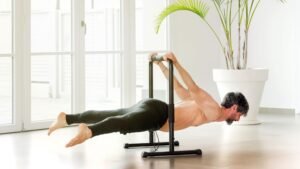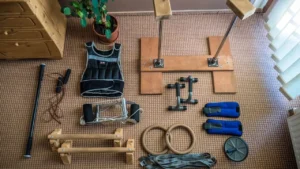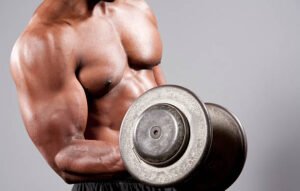Table of Contents
Calisthenics handstand is an apparently basic yet intricate move maneuvers. It is evidence of the harmony of the mind, body, and spirit in addition to being a display of strength and balance. It is a comprehensive workout that tests your mental toughness, works several muscle groups, and enhances proprioception.
In calisthenics, we strive for a comprehensive approach to fitness rather than just physical prowess. We hold that the body and mind are one that strength and flexibility are in balance, and that grace and power are in harmony. And this philosophy is wonderfully embodied by the calisthenics handstand. It involves more than just standing on your hands; it involves regulating your movements, comprehending your body, and going beyond your comfort zone.
This blog will be your guide to become an expert hand stander. Starting with the fundamentals, we’ll build a solid foundation using appropriate form and technique. After that, we’ll walk you through each stage while assisting you in developing your strength, balance, and self-assurance. Along the process, we’ll discuss typical problems, offer guidance on safe practices, and offer helpful hints and techniques.
But keep in mind that mastering calisthenics handstands is a marathon, not a sprint. It calls for endurance, patience, and persistence. Thus, go slowly, relish the procedure, and acknowledge each small step forward. Because each forward step in calisthenics is a step in the direction of perfection.
The Fundamentals of Calisthenics Handstand
The handstand in calisthenics is the ultimate feat of bodyweight mastery, requiring a sophisticated combination of strength, balance, and control. The strength of the human body and the tenacity of the human spirit are both demonstrated by it. But really, it comes down to three things: the shoulders, the wrists, and the core muscles.
Role of Wrists

The wrists, which are sometimes disregarded, are very important in the handstand. They serve as the base of equilibrium for the entire body. Strong and pliable, they must be able to support the weight of the body and adapt to minute changes in equilibrium. For a handstand to be both safe and successful, proper wrist alignment and conditioning are necessary.
Involvement of Shoulders

The powerhouse of the handstand, the shoulders, supply the strength and stability required to keep the body upright. Strong and agile, they must be able to control the forces involved in the handstand and maintain alignment. A successful handstand requires appropriate shoulder engagement and placement.
Core Muscles and Balance
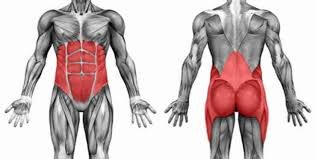
The handstand’s control center, the core muscles, are in charge of preserving alignment and balance. They must be able to coordinate motions, stabilize the body, and exhibit strength and responsiveness. The key to a stable and controlled handstand is a strong core.
Gaining proficiency in calisthenics handstands requires knowledge of and practice with these foundational skills. It’s about developing control, increasing strength, and increasing flexibility. Learning to pay attention to and comprehend your body’s cues, and to react with grace and accuracy. It’s about realizing your potential, conquering your worries, and stretching your boundaries.
Proper Body Alignment for Handstands
The handstand, in the context of calisthenics, is a demonstration of the ideal balance of strength, control, and balance. Appropriate body alignment is essential to this amazing feat and is something that is frequently disregarded in the quest for handstand proficiency.
Straight Line from Wrists to Toes
Picture an invisible guide that extends from your wrists to your toes, a straight line that your body should follow. This line shows how your body should align to perform a handstand—a stacking, sturdy pose in which your hands, feet, and entire body should all line up perfectly. Maintaining this alignment against the pull of gravity requires a fine balance and a coordinated effort from all the muscles in the body.
Meticulous Attention to Detail
Paying close attention to detail is necessary to achieve this harmony. Every inch counts, every angle is significant. Each component is vital to preserving this alignment, including the way your hands are held, the angle at which your wrists are positioned, the arch of your back, the tilt of your pelvis, and the tips of your toes. It’s a control and precision game that tests your body awareness and comprehension.
Engaging Core Muscles
Your body’s powerhouse, the muscles in your core, form the foundation of this alignment. In addition to assisting with alignment maintenance, using your core will give you the stability required for a handstand. It involves keeping your body rigid and upright, tucking in your pelvis, and squeezing your abs. A strong and engaged core is the secret to a steady and controlled handstand.
Keep in mind that a calisthenics handstand entails more than merely holding your balance. It’s an exploration of your own potential, a test of your limits, and a journey of self-discovery. Thus, enjoy the path to handstand mastery, take your time, and pay attention to your alignment.
Importance of Core Engagement in Calisthenics Handstand
The handstand serves as a testimonial to the strength of the core in the calisthenics community. The core, sometimes known as the body’s powerhouse, is essential to doing an impeccable handstand. It takes more than just strength; it also takes precision, control, and balance.
Breakdown of Muscles Involved
It’s similar to turning on your body’s control center when you engage your core during a handstand. To maintain a flawless handstand, you must use the power of your abdominal muscles, the pliability of your oblique, and the stability of your lower back. It all comes down to building a strong foundation from which your body can balance on your hands and resist gravity.
The Shoulder Muscles

Even though they are not a component of the core, the shoulder muscles are crucial to preserving the stability and alignment of a handstand. They provide the strength required to keep the body upright by cooperating with the core. However, this strength is controlled by the core, which directs it to the areas that require it most.
The Abdominal Muscles

The main components of balance and control are the abdominal muscles, which are the stars of the core. They maintain balance by keeping the body in alignment, keeping it from tipping over, and making tiny modifications. They make sure every body part plays its part flawlessly, much like the director of an orchestra.
The Oblique Muscles
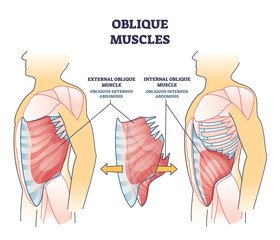
The flexibility required for a handstand is provided by the oblique muscles, the unsung heroes of the core. They permit the body to twist and flex, repositioning itself to keep equilibrium. They serve as the body’s shock absorbers, reducing the force of unexpected movements and alterations in equilibrium.
The Lower Back Muscles
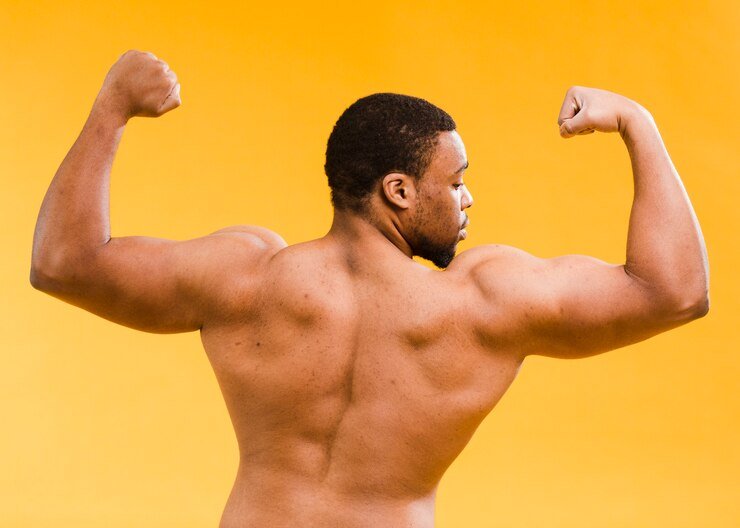
The stability required for a handstand is provided by the lower back muscles, which are the core’s backbone. They maintain the body’s rigidity, defy gravity, and bear the weight of the body. They serve as the body’s anchor, keeping it steady even in an inverted position.
To sum up, the core is essential to learning how to do a calisthenics handstand. It all comes down to using the appropriate muscles at the appropriate times. It has to do with control, balance, and strength. Above all, it’s about knowing your body and challenging your boundaries. Now tighten your core and start practicing handstands!
Preparation and Warm-up for Calisthenics Handstands
Setting out to become proficient in the handstand, one of the mainstays of calisthenics, calls for a comprehensive warm-up regimen. One cannot stress the value of a proper warm-up. It’s the initial move in guaranteeing a secure and successful handstand routine.
Effective Warm-up Techniques
A thorough warm-up prepares your body for the strenuous exercise that is about to occur. It improves flexibility, lowers the chance of injury, and promotes blood flow to the muscles. Cat-cow stretches, shoulder rolls, and wrist circles are useful handstand warm-up exercises. These exercises focus on the wrists, shoulders, and core, which are important parts of the handstand.
By strengthening and extending your wrists, wrist circles help your wrists become more capable of supporting the weight you’ll be carrying during a handstand. Conversely, shoulder rolls increase the mobility of the shoulder joints and lower the chance of strain by warming them up. An excellent exercise for warming up the spine and core and increasing control and flexibility is the cat-cow stretch.
Calisthenics Workout for Handstands
It’s time to start the handstand-specific calisthenics routine after you’ve warmed up. Exercises like hollow body holds, wall walks, and plank holds may fall under this category. Wall walks increase shoulder strength and mobility, plank holds fortify the shoulders and core, and hollow body holds improve body alignment and core stability.
Recall that planning is the key to a successful handstand. The foundation for handstand proficiency is laid with a focused calisthenics workout and a careful warm-up regimen. In order to achieve the ideal calisthenics handstand, take your time preparing, pay attention to your body, and enjoy the process.
Conditioning Your Body for Handstand Success
Taking the step to become an expert handstand performer is evidence of the effectiveness of body conditioning. It’s about getting your body ready for the demands of the handstand, a key exercise in calisthenics that requires control, balance, and strength.
Dynamic Stretches for Flexibility
Dynamic stretches are the first step in preparing your body for a successful handstand. These stretches are great for warming up the body and improving flexibility since they require movement, unlike static stretches. They improve mobility and lower the chance of injury by focusing on the wrists, shoulders, and core—key areas involved in a handstand. Cat-cow stretches, shoulder rolls, and wrist circles are a few types of dynamic stretches.
Strengthening Core Muscles
We then concentrate on fortifying the muscles of the core. The core, sometimes known as the body’s powerhouse, is essential to doing an impeccable handstand. It involves using your lower back’s stability, your oblique’s flexibility, and your abdominal muscles’ strength. Russian twists, hollow body holds, and plank holds are a few exercises that can assist build stronger core muscles, which can help you succeed in handstands.
Learning the Handstand
At last, we explore the skill of mastering the handstand. It involves learning the handstand’s mechanics, honing proper technique, and progressively increasing your strength and balance. It all comes down to tenacity, patience, and persistence. Recall that mastering handstands is a marathon, not a sprint. So take your time, listen to your body, and enjoy the journey.
Step-by-Step Progression for Mastering Handstands
Achieving proficiency in the handstand, a fundamental exercise in calisthenics, requires progression. It all comes down to making gradual progress toward your objective while strengthening your muscles, enhancing your balance, and perfecting your technique.
Wall-Assisted Handstand Practice
Practice doing wall-assisted handstands is the initial step in this journey. This method gives you the security and stability of a wall while letting you feel what it’s like to be upside down. It’s about developing self-assurance, strengthening your core and shoulders, and learning how to maintain control over your body when inverted.
Balance and Alignment Techniques
We then concentrate on alignment and balancing methods. Maintaining a straight line from your wrists to your toes is essential for perfect handstands. This is a stacked, sturdy position that calls for strength, control, and accuracy. Improve your alignment and balance with exercises like hollow body holds and line drills, and you’ll be well on your way to mastering the handstand.
Common Mistakes and How to Avoid Them
But mastering the handstand is not easy. There are obstacles along the way. Frequent errors like gazing ahead, bending the elbows, or arching the back can impede your progress and raise your risk of injury. However, these errors can be avoided with patience, awareness, and practice. It’s about improving your technique, picking up from your mistakes, and never giving up on getting better.
Recall that mastering handstands is a marathon, not a sprint. It calls for endurance, patience, and persistence. Thus, go slowly, relish the procedure, and acknowledge each small step forward.
Mastery in Handstand Practice
Mastering the handstand is a journey that goes beyond the physical demands of calisthenics. It’s about developing a resilient mindset, conquering obstacles, and never stopping trying to improve your abilities.
Mastering the handstand requires more than just being able to maintain one perfectly; it also requires an awareness of your body’s subtleties, the way your muscles interact, and the fine balance between strength and control. It’s about accepting the obstacles on your path, whether they be setbacks, plateaus, or falls, and utilizing them as stepping stones to your destination.
Overcoming Challenges
To overcome these obstacles, one must be persistent, patient, and have an optimistic outlook. It all comes down to seeing every obstacle as a chance to develop, learn, and get better. It’s about embracing failure and realizing that every setback results in you one step closer to success.
Advanced Handstand Techniques
You’ll come across advanced handstand methods as you develop in your handstand quest. Some exercises, like the handstand push-up and the one-handed handstand, call for greater power, balance, and control. They push the envelope, test your limits, and elevate your handstand technique to new heights.
Elevating Your Skills
Improving your handstand technique is an ongoing endeavor. It involves continuously pushing yourself, establishing new objectives, and working toward them. It’s about striving for greatness rather than settling for mediocrity. It’s important to master the handstand rather than just practice it. Recall that mastering handstands is a marathon, not a sprint. It calls for commitment, perseverance, and time. However, you can perfect the handstand with the appropriate approach, methods, and mindset. Thus, enjoy the ride, conquer the obstacles, and improve your abilities.
Building Full-Body Strength: The Role of Calisthenics
Building full-body strength is mostly dependent on the practice of calisthenics, which is the art of resistance training using one’s own body weight. It’s a comprehensive approach to fitness that improves your flexibility, balance, and coordination in addition to strengthening your muscles.
Handstand as a Core Exercise
The handstand is a fundamental exercise that is unique among the several calisthenics movements. It’s an impressive demonstration of the strength of the human body, a multi-muscled move that works your shoulders, wrists, core, and legs. The handstand is a demonstration of control, balance, and accuracy in addition to strength.
Integrating Handstand in Workouts
Including the handstand in your exercises will greatly increase your strength across your entire body. This exercise is adaptable and can be included in a variety of training regimens, including balance and coordination exercises, flexibility exercises, and strength training. This practice can test your limits and push your boundaries, regardless of your level of experience. A beginner can start with wall-assisted handstands, while an accomplished practitioner can complete freestanding handstands.
Nutrition and Recovery for Handstand Success
But mastering handstands requires more than just exercise—you also need to focus on recuperation and diet. A well-balanced diet high in healthy fats, carbs, and protein can help build and repair muscle while giving you the energy you need to work exercise. Enough sleep and recuperation are equally crucial for promoting muscle growth and healing.
In conclusion, calisthenics, with the handstand as a core exercise, offers a comprehensive approach to building full-body strength. It’s about the harmony of strength, flexibility, balance, and control. It’s about the synergy of workout, nutrition, and recovery. And most importantly, it’s about the journey towards a healthier, stronger you. So, embrace the challenge, enjoy the journey, and witness the transformation
Fueling Your Body and Enhancing Recovery: A Comprehensive Approach
Reaching peak performance in calisthenics, especially while learning to do the handstand, necessitates a thorough strategy that extends beyond the exercise routine. To improve performance and advance, you must provide your body with the correct nutrition and make sure that it recovers sufficiently.
Importance of Protein and Hydration

In this process, protein is essential. It helps with muscular growth and repair as the building block of muscles, so after a strenuous handstand session, your muscles will recover and get stronger. Getting enough protein from your diet—from dairy, plants, or lean meats—can make a big difference in how quickly your muscles heal and strengthen.
Hydration is as crucial, although it’s sometimes forgotten. Water is necessary for many biological processes, such as the movement of nutrients and the contraction of muscles. Maintaining adequate hydration can enhance performance, avoid cramping, and facilitate recuperation.
Rest and Sleep for Optimal Performance
But feeding your body is only one aspect of the puzzle. Sleep and rest are essential for performing at your best. Your body heals itself when you sleep, restoring energy reserves and healing muscle damage. Getting enough sleep can improve your performance, lower your chance of injury, and improve your general health.
In summary, developing the handstand requires more than simply physical exercise; it also requires a well-rounded strategy that addresses recovery, hydration, and appropriate nutrition. It all comes down to paying attention to your body’s needs, providing it with the correct nutrients, and allowing it to relax. So load up on nourishment, get plenty of rest, and start your path to handstand mastery!
FAQs
1. What is a calisthenics handstand?
A calisthenics handstand is a bodyweight exercise where you balance your body upside down on your hands. It requires strength, balance, and control.
2. How do I start learning handstands?
Start with basic exercises to build strength and balance. Wall-assisted handstands are a great starting point. Always ensure proper form to avoid injuries.
3. What muscles does a handstand work?
Handstands work several muscle groups including the shoulders, arms, core, and even legs. They require a significant amount of strength and stability.
4. How can I improve my handstand balance?
Practice is key. Also, exercises that strengthen your core and shoulders can help improve balance. Techniques such as line drills and hollow body holds can also be beneficial.
5. What are some common mistakes in handstand practice?
Common mistakes include arching the back, bending the elbows, or not properly engaging the core. Awareness and correction of these mistakes are crucial for progress.
6. How can I incorporate handstands into my workout routine?
Handstands can be incorporated into various parts of your workout, from warm-ups and cool-downs to strength training sessions. They can also be practiced separately as a skill.
7. How long does it take to master a handstand?
The timeframe varies greatly depending on individual factors like fitness level, consistency of practice, and dedication. For some, it might take a few months, while for others, it might take a year or more.
8. Are handstands safe?
Yes, when done correctly and progressively, handstands are safe. However, they should be approached with caution, especially if you’re a beginner or have any pre-existing health conditions.
9. Can handstands help in building full-body strength?
Absolutely! Handstands engage multiple muscle groups and require a significant amount of strength, balance, and control, making them a great exercise for building full-body strength.
10. What role does nutrition and recovery play in handstand success?
Nutrition and recovery are crucial for handstand success. A balanced diet fuels your workouts and aids in muscle recovery, while adequate rest allows your muscles to heal and grow stronger.
In conclusion, the process of becoming proficient in the calisthenics handstand serves as evidence of the strength of tenacity, self-control, and overall physical health. It’s about taking on a transformative journey that improves your strength, flexibility, and body awareness—it’s not just about landing an upside-down balance.
The handstand works several different muscle groups, tests your balance, and requires mental toughness. It’s a challenging but gratifying workout. It offers countless options for learning and improvement, regardless of skill level.
But mastering the handstand requires more than just physical effort. It includes eating right to fuel your workouts, getting enough rest to let your muscles repair and get stronger, and having an optimistic outlook to overcome obstacles and push your limits.
Never forget that every step, no matter how tiny, is a step in the right direction. Thus, enjoy the ride, acknowledge your accomplishments, and never stop pushing the envelope. Although learning a handstand is a difficult path, the journey is also quite rewarding. Thus, continue honing your skills, have patience, and let the journey begin. Cheers to your handstand adventure and the incredible advancements you will undoubtedly achieve!


